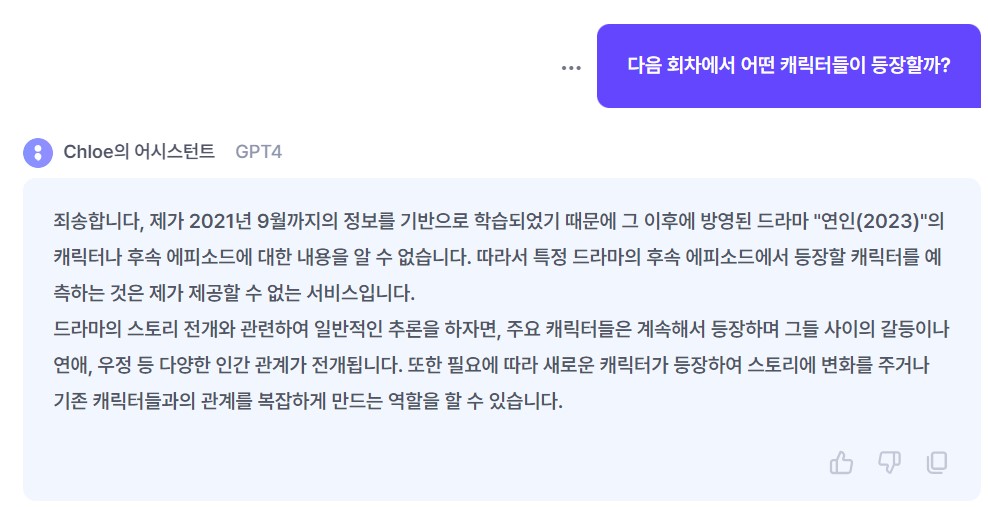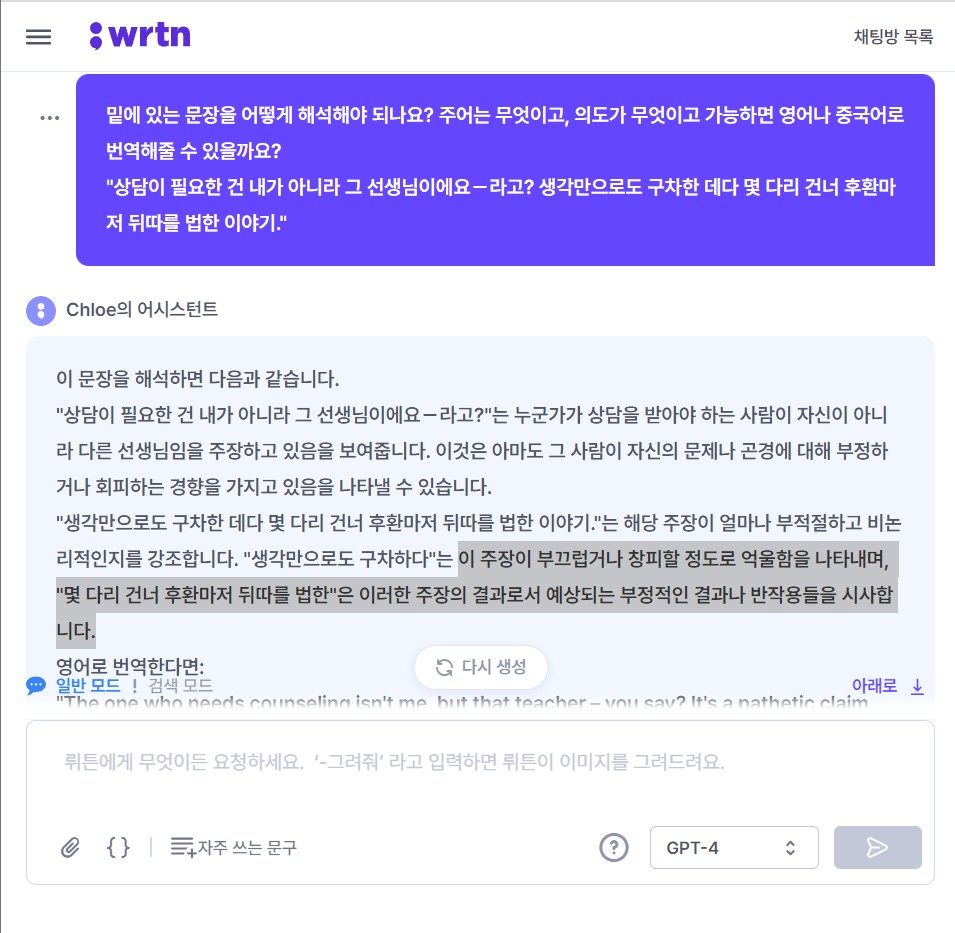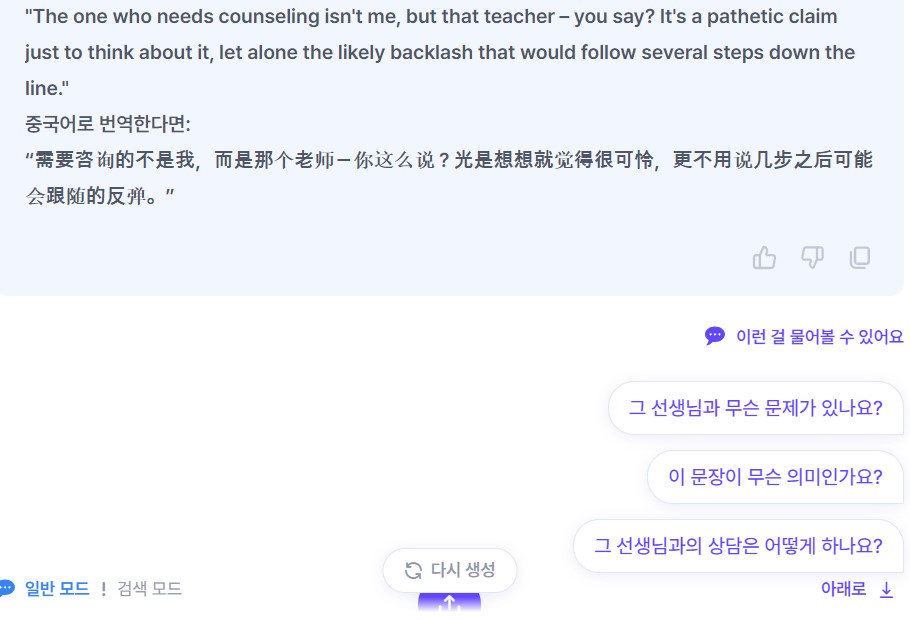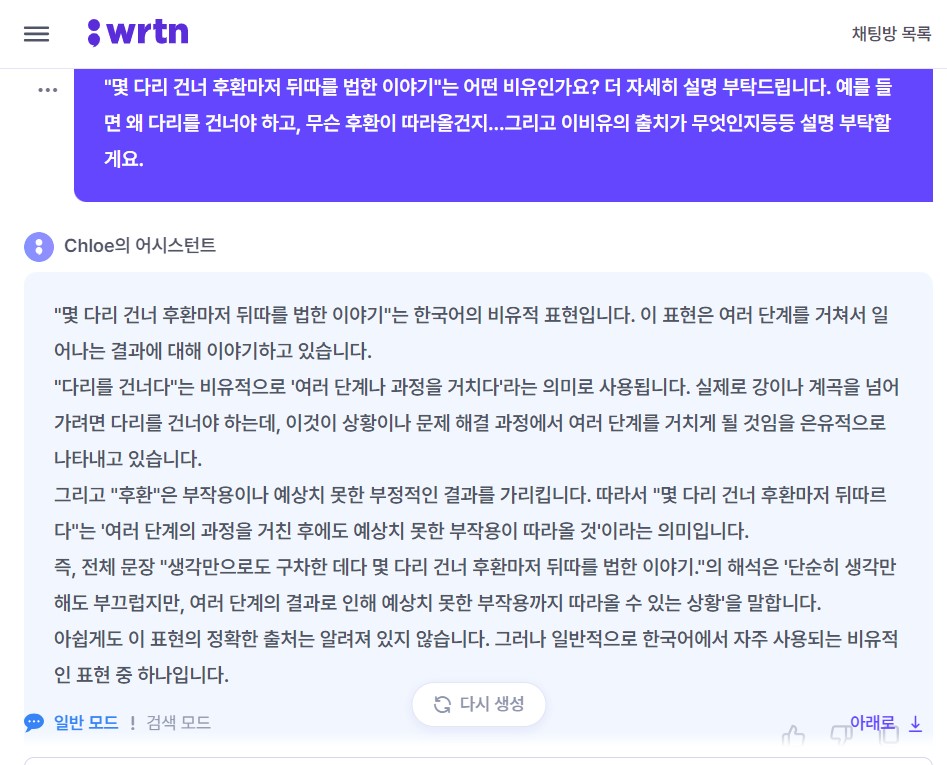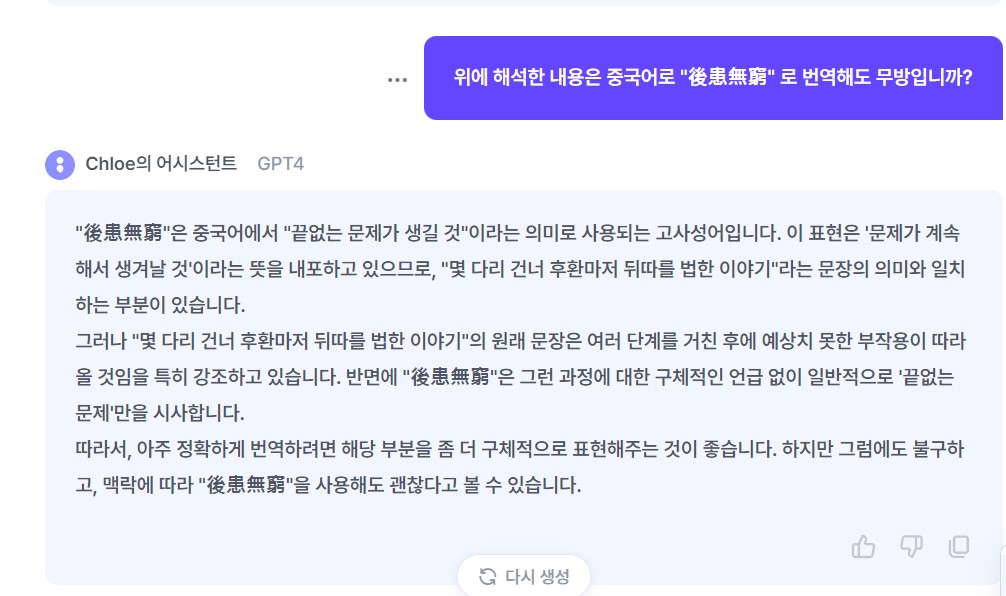Review of Korean Generative AI - Wrtn
2023-09-4
Last year, I wrote a post discussing “Can ChatGPT Replace Professional Translators?” and followed up with another piece titled “A Follow-up to the ChatGPT review.” I got some response and also noticed some engaging discussions stemming from these articles.
At that time, my main focus was on testing in Korean to understand how ChatGPT performed in languages other than English. Of course, later on, I learned that such generative AI models also require extensive training with large language datasets (LLM) beforehand. Compared to the vast amount of information available in English, ChatGPT’s performance in other languages was naturally somewhat limited.
Recently, I came across the generative AI from the South Korean startup Wrtn. I decided to give it a try to see if it could assist in comprehending texts that are more abstract and require local knowledge.
Wrtn:Pronoun like “Written”.
First and foremost, I often encountered challenges related to usage that couldn’t be found on the internet or in dictionaries when I translated Korean to Mandarin, or the other way around. In the past, I would ask my Korean friends, but you can’t always rely on them. If a generative AI could help decipher such text, it would be extremely useful.
How does Wrtn work?
According to Wrtn’s introduction, their AI combines GPT-4 (or optionally GPT3.5 model), Naver Hyper Clova, and their owned language model. Wrtn is the first company in South Korea to introduce text AI plugins. They also have desktop and mobile app versions. From their website, it seems they have ambitions for corporate collaborations, and they are expected to launch chatbot or other enterprise features.
Based on this technical background, when I inquired with Wrtn (on their language portal), they made it clear that they are not simply a translation tool of ChatGPT. After trying it out, I found that they were right; it feels more fluent and nature in generating Korean text compared to ChatGPT.
Getting Started - Limitations of Generative AI
Before we start, it will be nice to talk a bit more about the limitation of Generative AI.
1. The lastest time of its learning database
First and foremost, the limitation of generative AI lies in the fact that it learns from data up until a certain point in time. Therefore, it might not be very useful for verifying current trends and buzzwords. This happens to Wrtn as well.
Before using Wrtn, I decided to ask it about the characters appearing in the next episode of an ongoing TV drama. As expected, it began by earnestly explaining the timeline of the data it had learned and then, like any other generative AI, it ventured into speculating about how the story might unfold. It guessed that the main characters would continue to appear, and the story would revolve around their conflicts, romances, friendships, and various interpersonal relationships. Additionally, it mentioned that other characters might also make appearances as the plot demands.
From this simple test, it became clear that we cannot use Wrtn to verify facts (similar to ChatGPT, a super common myth!).
Wrtn explain the data its used to learn
2. Possibility of Providing Inaccurate Information
As shown above, Wrtn’s chatbox displays a warning, emphasizing that this AI, like ChatGPT, is simply “generating language” and does not provide factual verification.
3. Interpretation Based on Provided Context
Generative AI relies on additional context within the conversation to interpret and generate content. If there’s a lack of contextual information, it’s highly likely to make errors.
Application - Enhancing comprehension of the original text in Korean
After considering the above limitations, I decided that my testing strategy this time would involve questioning Wrtn with sentences and phrases I already had some knowledge of:
PS: When writing this post, I assumed that many of readers might have at least some knowledge of Korean. I also aimed this article primarily at Korean language learners or translators, so the translations will be relatively brief. Sorry for the inconvienience and hope my elaboration is good enough to deliver how Wrtn can be applied to work.
. What I was most curious about was whether Wrtn could assist in depicting and explaining the underlying meaning of the text. The Korean piece I selected in this test included a kind of metaphor, so while it could be translated literally based on the literal meaning of the words, there is no equivalent expression in Mandarin Chinese. A literal translation would lose the intended nuance, so instead of a direct translation, it might be more effective to find a common proverb or metaphor with a similar implication.
The selected literal content is: “光想就很卑微,更不用說這是一個跨越很多橋,還有很多後患跟來的常見故事” (Transliteration: Just thinking about it feels lowly, not to mention this is a common story of crossing many bridges with many consequences.)
I also asked Wrtn to translate this piece into English and Mandarin Chinese. For me, regardless of the accuracy of Wrtn’s translation, what stood out was that this explanation was not satisfying.
Because this was originally a very abstract literary text, the Mandarin Chinese and English translations it provided, while technically accurate, felt quite ordinary.
*Wrtn’s English and Chinese translations provided.
However, my original intention wasn’t for it to provide a translation but rather to offer more detailed explanations.
Knowing the precise meaning and use cases can give me better translation inspiration and rescue me when I’m stuck with dry text, sometimes.
So, I continued to inquire further. This time, I directly asked it to deconstruct the metaphor and explain what it meant by “crossing bridges” and why there might be “consequences” in the text.
This time, the answer provided was more detailed. It explained that “crossing many bridges” is a common metaphor in Korean, signifying going through many stages to achieve a result. Therefore, the whole text is explaining “under the consequences brought about by several stages, there may be unexpected consequences.”
At this point, I felt that this level of understanding was quite sufficient for grasping the meaning. The rest depends on the translator’s skills, especially if they’ve read the entire piece. If they happen to be stuck at this point, they should be able to continue forward to find a great way to translate it.
*Asking Wrtn about details and origins of this metaphor.
Finally, I gave it a small validation test by providing a Mandarin translation and asking if it was good enough.
I think this test directly demonstrates Wrtn’s comprehension abilities. It directly explained that the provided Chinese translation was consistent with part of the original text’s meaning. Still, because this translation didn’t capture a certain aspect, it needed to be more specific. Wrtn here, also pointed out why it felt the provided Chinese translation was somewhat biased.
As someone who knows what the context is all about, I understand that this kind of test is quite unfair for generative AI (They don’t know the context except the piece that I provided). However, Wrtn provided an impressively detailed response that aligns with the context.
*Providing a Chinese translation and asking it to confirm if it aligns with the original text’s meaning.
Rewrite text with Wrtn and how it can assist Korean language learning
I think the most challenging part of learning a language is outputting it. After outputting, whether you can find the right person to correct it is also a question. From this aspect, this is the greatest convenience that I believe generative AI brings.
This time, I asked Wrtn for help in correcting my Korean grammar and spelling, although I forgot to ask it to check spacing (Korean uses spaces). Nevertheless, it fixed that too. Additionally, I asked it to rewrite the same content in a nature way.
Comparing these two versions allows us to learn more natural ways of expression in Korean, which I believe can be extremely helpful for practicing Korean writing.
Asking Wrtn to correct grammar while maintaining a natural tone (although there seems to be a spacing error here, which should be corrected in the future)
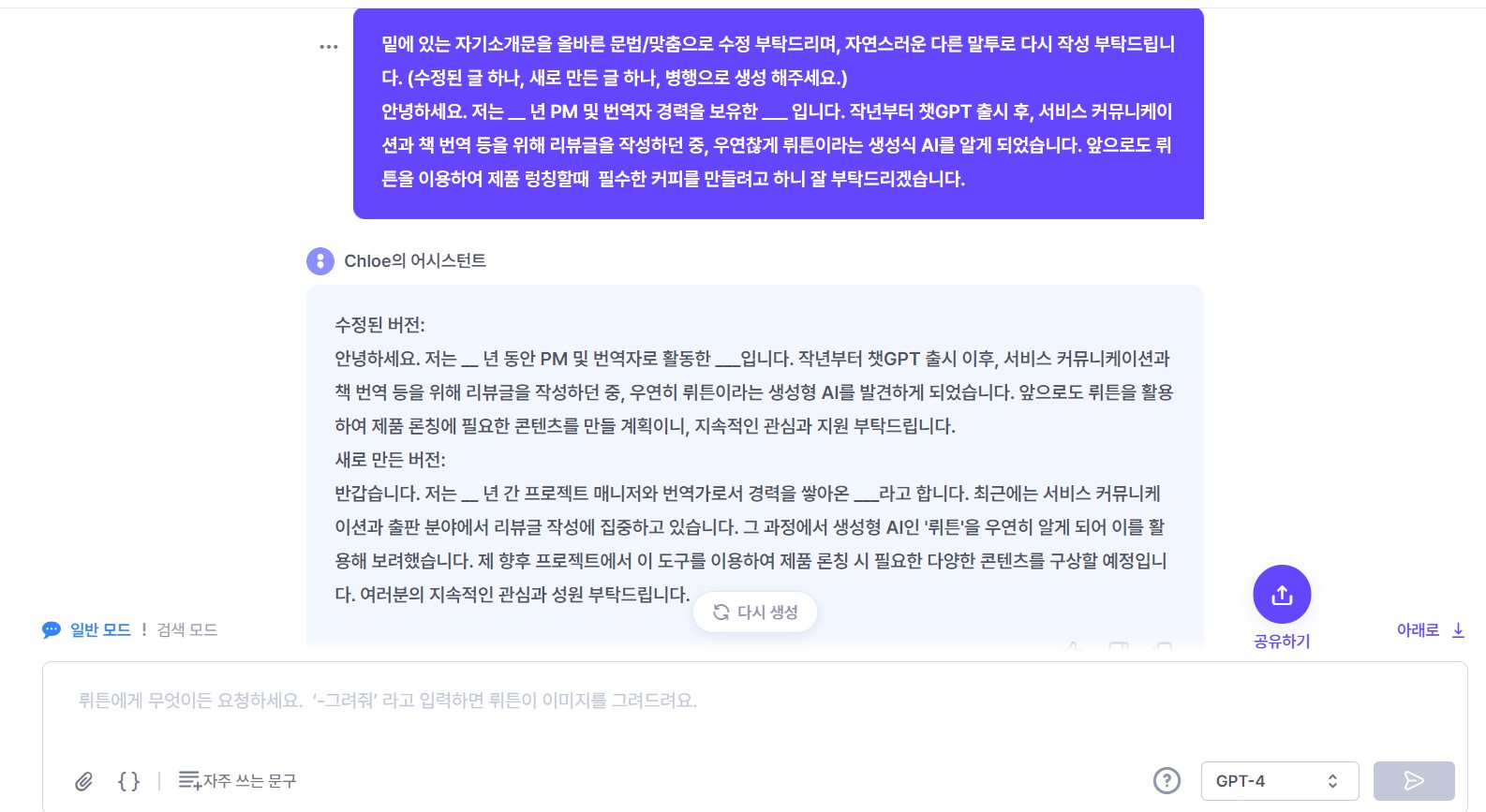
Wrtn for Business Use
This is currently the aspect that has surprised me the most. Wrtn offers practical business functionalities. For instance, you only need to input the post’s topic, categories (event announcement, new product introduction, group-buy, sponsored ad), and it will automatically generate the posts that we need.
Generating an Instagram post using Wrtn
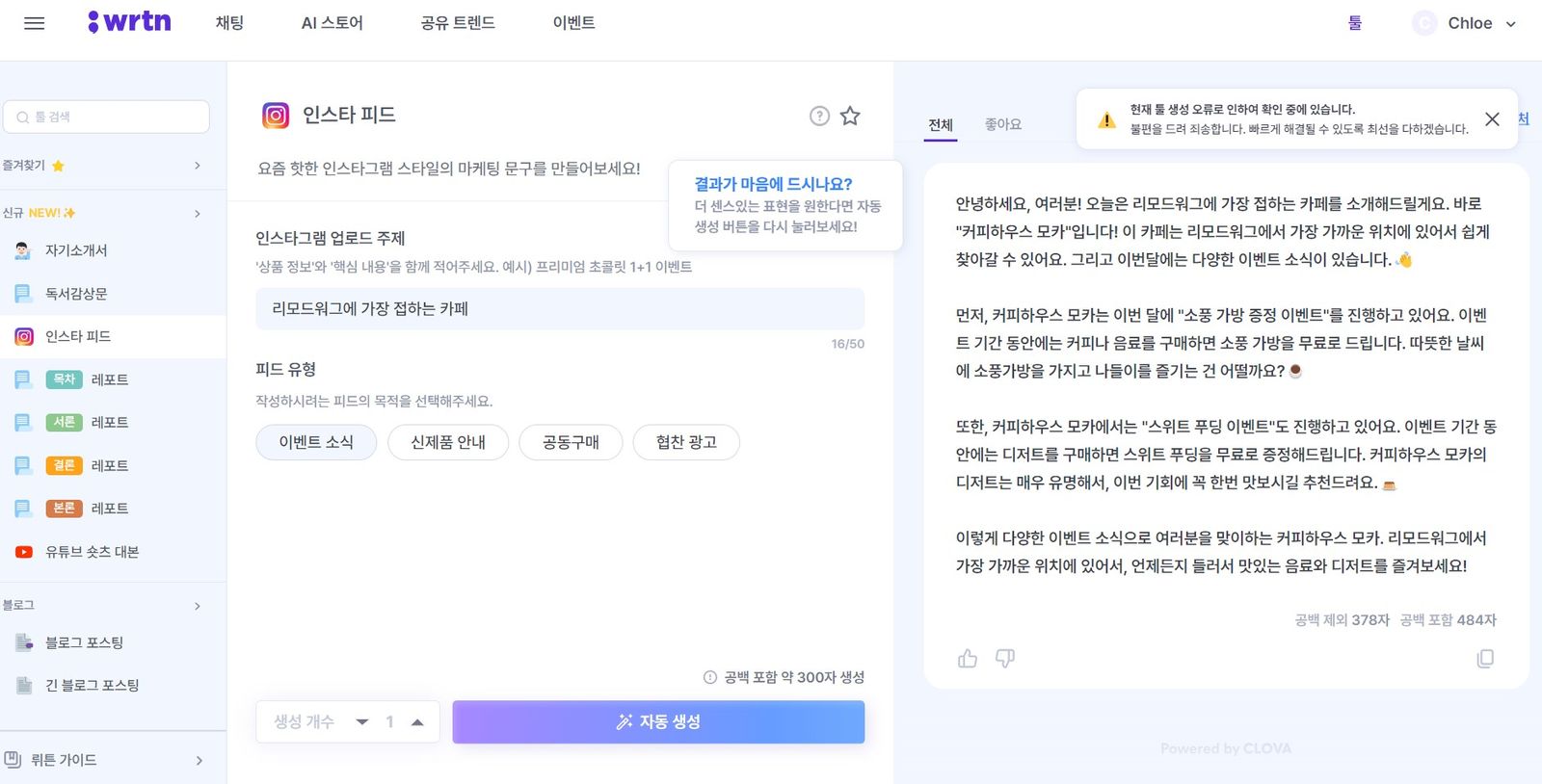
Furthermore, it can generate text for various platforms such as ad copy for major platforms, business and meeting invitation email drafts, self-introduction for resumes, job postings, YouTube short film scripts, and blog posts. Its applications are quite extensive.
Because it provides categorized frameworks, there’s no need to worry about creating lengthy prompts (instruction for Generative AI), which is very user-friendly!
Wrtn’s Copyright Statement
As for whether the texts generated by Wrtn can be used for commercial purposes, the explanation from Wrtn is very clear:
Who owns the copyright to works generated by Wrtn?
The copyright and usage rights belong to the user, and they can be used for both personal and commercial purposes. However, any issues arising from the use of generated text are the responsibility of the user.
What constitutes the content of works generated by Wrtn?
Wrtn generates new sentences each time based on the content input by the user. The generated text may be based on learned information, but the probability of it being exactly identical to the original information or containing the same words as search engine results is relatively low.
Is the content of works generated by Wrtn trustworthy?
The results generated will prioritize the content input by the user. However, during the process of generating sentences, there may be instances where the information does not align with facts. When using generated text, it is recommended to verify its accuracy.
Wrtn’s copyright statement

Summary of Wrtn Review
Wrtn uses a larger dataset for Korean language learning compared to ChatGPT, making it a specialized generative AI for Korean. From the company’s activities, it also seems to have ambitions for expansion into Japan. I’m looking forward to seeing its development in the Japanese language community in the future.
In addition, Wrtn offers an AI Studio for personal use, allowing individuals to set up AI without the need for coding skills, which is a significant advantage for those unfamiliar with coding.
Currently, the drawback is that the text generation speed is slightly slower compared to ChatGPT (I recommend using the GPT-3.5 module for faster speed), and there are occasional errors in the generated content. However, I believe these minor issues will be gradually addressed.
I’m particularly curious about Wrtn’s future business model. From the current website structure, it seems to prioritize commercial profitability for now. Perhaps they will also introduce a subscription model.
Personally, I think Wrtn has great potential if it can offer subscription packages with different features based on user demands.
Get Started with Wrtn:
-
Wrtn Tool: Various text generation tools
-
Wrtn Assistant: Conversational text generation window
Please feel free to leave a comment or contact me below :)

